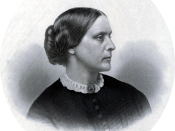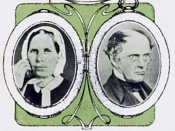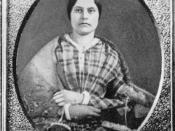Susan B. Anthony
Cautious, careful people always casting about to preserve their reputation or social standards never can bring about reform. Those who are really in earnest are willing to be anything or nothing in the world's estimation, and publicly and privately, in season and out, avow their sympathies with despised ideas and their advocates, and bear the consequences.
- Susan B. Anthony
Susan B. Anthony was born February 15, 1820 in Adams, Massachusetts. Where she was brought up in a Quaker family that had long activist traditions. With this, she developed early in her life a sense of justice and moral enthusiasm.
She taught for fifteen years at a Quaker seminary, and from there became a
headmistress at a women's division of a school. At 29 years old, she then became active in
restraint and temperance. Because she was a woman, she was not allowed to speak at
Temperance Rallies.
This experience, and her acquaintance with Elizabeth Cady Stanton, who was to become her lifelong partner in political organizing, especially for women's rights and woman suffrage, led her to join the women's rights movement in 1852. Soon after this, she decided she needed to dedicated her life to woman suffrage.
Ignoring opposition and abuse, Anthony traveled, lectured and canvassed across the nation for the vote for women's rights. She would also go on to campaign for the abolition of slavery, women's rights to their own property and earnings, and women's labor organizations. In 1900, Anthony persuaded the University of Rochester to admit women. Which I see as a big step for women's rights in history.
In 1872, in an attempt to claim that the constitution already permitted women to vote, Susan B. Anthony cast a test vote in Rochester, New York, in the presidential election. She was found...


